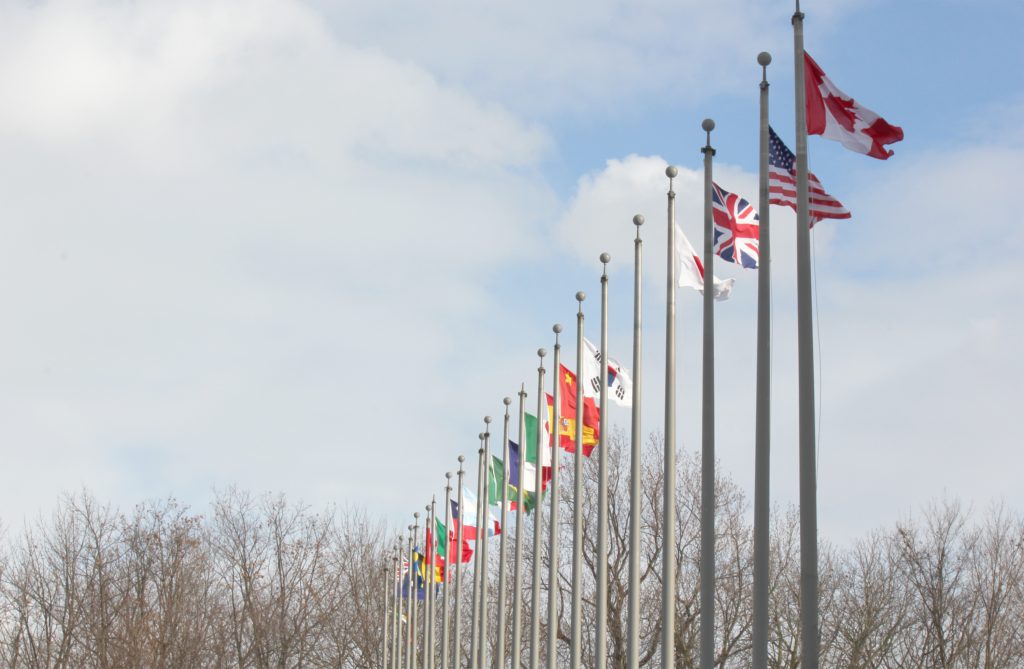We are all aware that the United Nations has historically worked cooperatively for the earth’s and environment’s welfare, which is why the UN has assembled virtually every nation on the planet for international climate summits known as COPs.
As the UN Framework Convention on Climate Change’s highest governing body, the COP is known as ‘Conference of the Parties’
The first-ever COP summit was held in Berlin, Germany, 1995.
The five designated UN divisions, including Africa, Asia, Latin America, and Others, alternate in holding the governorship of the COP. Also, the COP’s location has a tendency to shift between all these divisions.
From October 31st to November 12th (2021), the UK has arranged this event as a last-ditch effort to tackle climate change.
This year marks the 26th annual meeting, hence the title is given COP26.
COP26 is being hosted in Glasgow, Scotland, with the UK taking the Presidency of the event with the partnership of Italy.
Intending goals of COP26 and the major outcomes after the summit:
1. Secure global net-zero by mid-century and keep 1.5 degrees within reach
Goal: Countries are being urged to submit ambitious carbon reduction plans for 2030, with the goal of attaining net zero by the middle of the century.
To begin with the first goal of the summit carbon reduction plan by 2030, In order to adapt to the negative and costly impacts of climate change, such as decreasing agricultural yields and damaging storms, a majority of the world’s developed economies believed that affluent nations should donate greater resources to climate-vulnerable countries.
Several noteworthy announcements were made outside of the sessions during the two-week summit.
India’s courageous commitment to net zero emissions by 2070, 109 nations’ pledge to cut methane emissions by 30% by 2030, and 141 countries’ pledge to cease forest degradation and land degradation by 2030 were just a few of the more than 100 high-level declarations made over the first two days of the “World Leaders Summit”.
With the objective of transforming every area of the economy to generate a net-zero future, the Glasgow summit acted as a launchpad for new sectoral alliances and financing to make them successful.
2. Adapt to protect communities and natural habitats
Goal: The climate is currently warming and will change over time even when emissions are reduced, with disastrous consequences. Simultaneously, we must collaborate to allow and encourage countries affected by climate change to conserve and restore ecosystems.
People worldwide already endure deadly extreme weather exacerbated by climate change. Even as we strive to cut emissions, change is unavoidable.
We are closing the adaptation gap and reacting to climate effects by responding to important party and civil society goals. Our Glasgow Adaptation Imperative outlines current and future actions necessary to achieve a climate-resilient future for everybody.
With the help of Egypt, Bangladesh, Malawi, the Netherlands, Saint Lucia, and the United Nations Development Program (UNDP), the Adaptation Action Coalition (AAC) was developed.
Together, the Coalition aims to transform high-level promises into focused, practical action to establish a climate-resilient world by 2030. Assembling sector-specific workflows, sharing adaptation ideas, and ensuring adaptation is high on worldwide agendas.
The Coalition is also pushing for community-led adaptation, giving communities and local actors more authority and resources to promote climate resilience.
With over 70 nations and organizations having approved the Principles for Locally Led Adaptation, many of which were announced at COP26, WRI and IIED lead this workstream.
3. Mobilise finance
Goal: We must work to raise the billions of dollars in private and public sector investment required to achieve global net-zero carbon emissions. Developed nations must keep their promise to raise at least $100 billion in climate funds per year by 2020, and financial institutions must play a major role.
The Glasgow Financial Alliance for Net Zero revealed during the Finance Day that it has gathered over 450 enterprises from 45 countries to pledge to net-zero emissions.
The corporations control approximately $130 trillion in private money altogether.
British Chancellor Rishi Sunak said the assets will be matched with the aims of the Paris Agreement, including limiting global warming to 1.5°C. ‘
A new collaboration of France, Germany, UK, US and EU announced $8.5 billion in grants, concessional loans, investments, and risk-sharing mechanisms to assist South Africa decarbonize its energy industry.
As a result of the cooperation, South Africa’s transition to a low-carbon, climate-resilient economy is likely to be accelerated.
The World Meteorological Organization inaugurated a new tool to help nations generate and exchange basic data to enhance weather predictions and climate services. The Systematic Observations Financing Facility will help needy nations and peoples adapt to climate change.
4. Work together to deliver
Goal: We can only overcome the problems of climate change if we all work together. At COP26, we must implement the Paris Rulebook agreement and expedite action to address the climate issue by collaboration among governments, businesses, and civil society.
Pact considerably increases the push for action and funding for adaptation. Developed nations are encouraged to quadruple their collective climate funding for adaptation in developing countries by 2025, in order to achieve a proper balance between the needs.
Specifically, it asks multilateral development banks, other financial institutions, and the private sector for increased financing of climate policies.
COP26 also obtained agreement on major aspects of the “Paris Agreement Rulebook,” which had been the subject of intense talks for the last six years.
In terms of market procedures and transparency, the agreement addresses all aspects.
COP26 vs Paris Climate Agreement:
The evaluation of national communications and emission inventories presented by the Paris Agreement Parties has a major role for the COP.
Some of the most important topics in COP26 are based on whether governments are keeping their promises made in Paris.
The Paris Climate Agreement is also known as COP21, which was held in Paris 2015.
For the first time, every nation pledged to work together to restrict global warming to well below 2 degrees and strive for 1.5 degrees, adapt to the implications of a changing climate, and make money available to achieve these targets.
It was agreed that each country would submit Nationally Determined Contributions (or “NDCs”) outlining their intentions for reducing emissions.
Every five years, they promised to revisit their original plan with a new one that better reflected their current goals and aspirations.
In advance of the Glasgow summit, all nations were supposed to submit new goals for reducing emissions, but many have failed to do so, and some of the world’s most important economies have yet to set a net-zero aim.
Connect with our waste management consultants here!
India’s opposition at the summit for ‘Phase out’ to ‘Phase down’ for coal:
Nearly 200 countries agreed to a challenging climate pact on November 13 that was intended to preserve a key global warming goal, but it contained an addition that some senior officials regarded as ‘watering down’ of important terminology about coal.
There have been objections from a number of countries, including small island states, over Indian plans to “phase down” rather than “phase out” coal as the primary source of greenhouse gas emissions.
By 2070, Indian Prime Minister Narendra Modi promised to decrease emissions to zero and cut carbon emissions by one billion tonnes by 2030, as well as boost the percentage of renewable power production in the country to 50%.
Others have a more positive outlook on the agreement. With the modified coal language, the Glasgow Climate Pact had enough financial incentives to almost satisfy poorer countries while also overcoming an issue that would open the door to carbon trading.
The accord also stipulates that large carbon emitters must return and increase their emission reduction promises by the end of 2022.
Conclusion
Global collaborative action is needed now more than ever, and COP26 has reaffirmed this necessity. Despite the fact that we haven’t caught up to where we should be, the progress made the year before and the climate summit gave us reason for optimism. This outcome demonstrates that the Paris Agreement’s goals and financing mechanisms are working, although imperfectly and at a slower pace than we would want.
Glasgow Climate Pact proposes an action plan for achieving the objective of reducing global warming to 1.5°C. To meet the needs of countries that are particularly vulnerable to climate change and to make the transition to a net-zero economy, more effort is required. The Glasgow Pact will aid us all in our efforts to build a better future. Connect with our sustainability consultants here!












